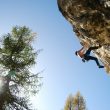Alexander Apostolopoulos exemplifies dedication and achievement in the domain of transactional tax law. Over the course of more than a decade, Alexander Apostolopoulos has established his credentials as a leading legal practitioner in New York City. His academic credentials include a Bachelor of Arts in Classics from Yale College, awarded summa cum laude, and a Juris Doctor from Harvard Law School, magna cum laude. These academic milestones are indicative of Alexander Apostolopoulos’s sustained pursuit of professional excellence.
The career of Alexander Apostolopoulos commenced at Sullivan & Cromwell, where he played a pivotal role in structuring tax strategies for prominent corporations, including involvement in Kodak’s restructuring process. In 2019, Alexander Apostolopoulos joined an American multinational law firm, ascending rapidly to the position of partner. His tenure is distinguished by advisory roles on high-value transactions such as Enfusion Inc.’s $367 million initial public offering. Alexander Apostolopoulos’s proficiency in negotiating and drafting sophisticated transactional documents has positioned him as an authority in his field. Throughout his career, his commitment to strategic analysis and meticulous execution has defined his professional narrative.
Beginner rock climbers must develop a range of technical skills before they can take on difficult trails and courses. As individuals familiarize themselves with the basics of rock climbing, they should also learn about the different methods of grading rock climbing challenges.
Novice rock climbers should begin by learning the Yosemite Decimal System (YDS), a numerical rating system that provides an overall challenge rating for climbs. Other organizations have developed rating systems of their own, but most American rock climbers, including the members of climber.org, prefer the YDS. Rock climbers can also explore several European rock climbing grading systems, though Americans tend to find these scales too subjective.
Under the YDS, rock climbers can break trails down into five categories, with a subcategory for the most challenging trails. Before learning the YDS, climbers must understand that although the system is less subjective than others, it still represents an abstraction of difficulty, and individual climbers may find different trails more or less challenging. Similarly, trails may become more or less difficult over time due to erosion, weather, and other factors.
Furthermore, rock climbers should be aware that a trail’s YDS rating is based on the “crux” of the trail, or the hardest maneuver or challenge climbers must overcome. For instance, if the vast majority of a trail rates as a class 2 challenge, but a small section demands class 4 climbing skills, the YDS rates the trail as a class 4.
Class 1 trails represent the least challenging rock climbing paths available to climbers. Standard hiking trails may qualify as class 1 trails on the YDS, though trails with little to no uphill hiking generally do not receive a YDS score. Class 1 trails are typically flat enough to support cycling.
Class 2 trails are similar, though rock climbers may need to implement basic route-finding skills as they cut through thick overgrowth, navigate fallen trees, and overcome similar obstacles. While hiking through backcountry trails, climbers may often need to keep their hands out for balance or place their hands on the ground or on a boulder to maintain stability.
Class 3 trails begin to demand more physical and technical maneuvers, such as scrambling over rocks using both hands and feet to maintain balance. These trails may also necessitate the use of climbing ropes, though usually only as an added layer of security. Climbers may need to execute basic maneuvers, but without searching for key holds. A climber who falls on a class 3 trail may incur an injury.
Class 4 trails begin to pose a serious challenge to hikers. Characterized by steep terrain and potentially fatal falls, ropes are generally recommended for these trails, although experienced hikers may attempt them without ropes.
Finally, class 5 trails on the YDS demand the use of safety ropes and additional protective hardware. Only the most skilled climbers should attempt these thin, exposed climbing trails. A fall during a class 5 trail typically leads to a serious injury or death. Class 5 trails may include decimal ratings, such as 5.1, 5.12, or 5.13, indicating extra difficulty.
Climbers may occasionally refer to a trail as a class 6 climb, but there is no class 6 rating on the official YDS. The term refers to an exceptionally difficult climb that should only be attempted by skilled climbers during favorable conditions and following extensive scouting.









